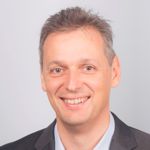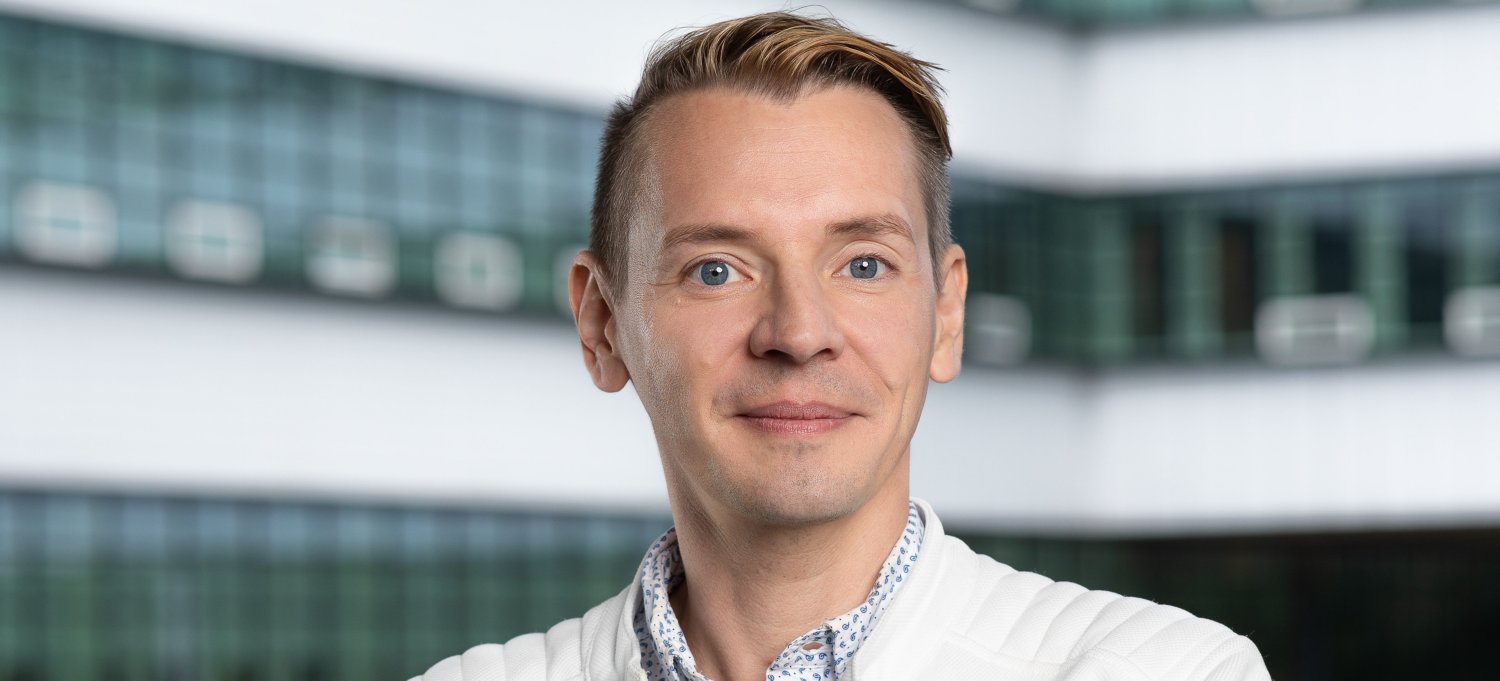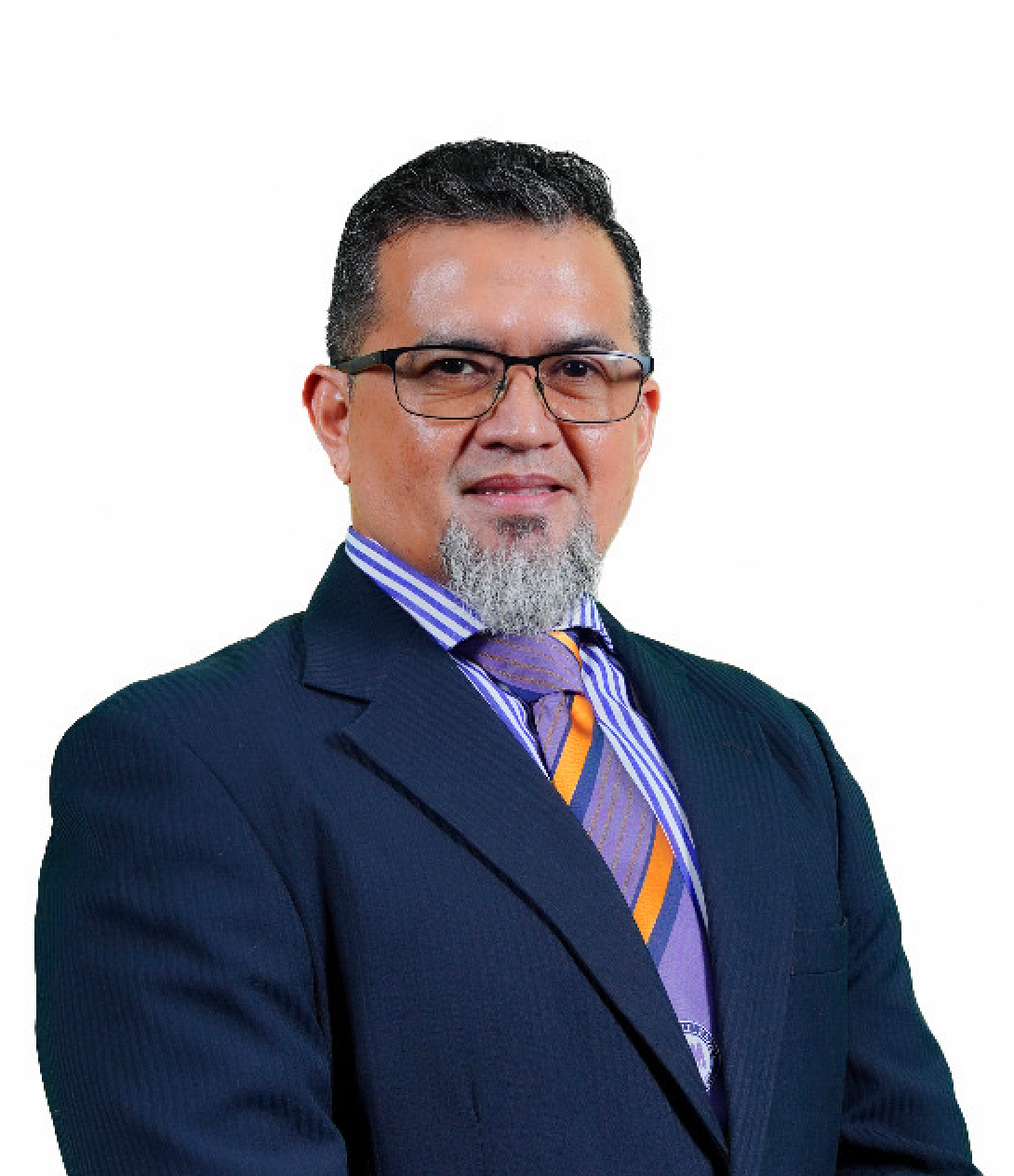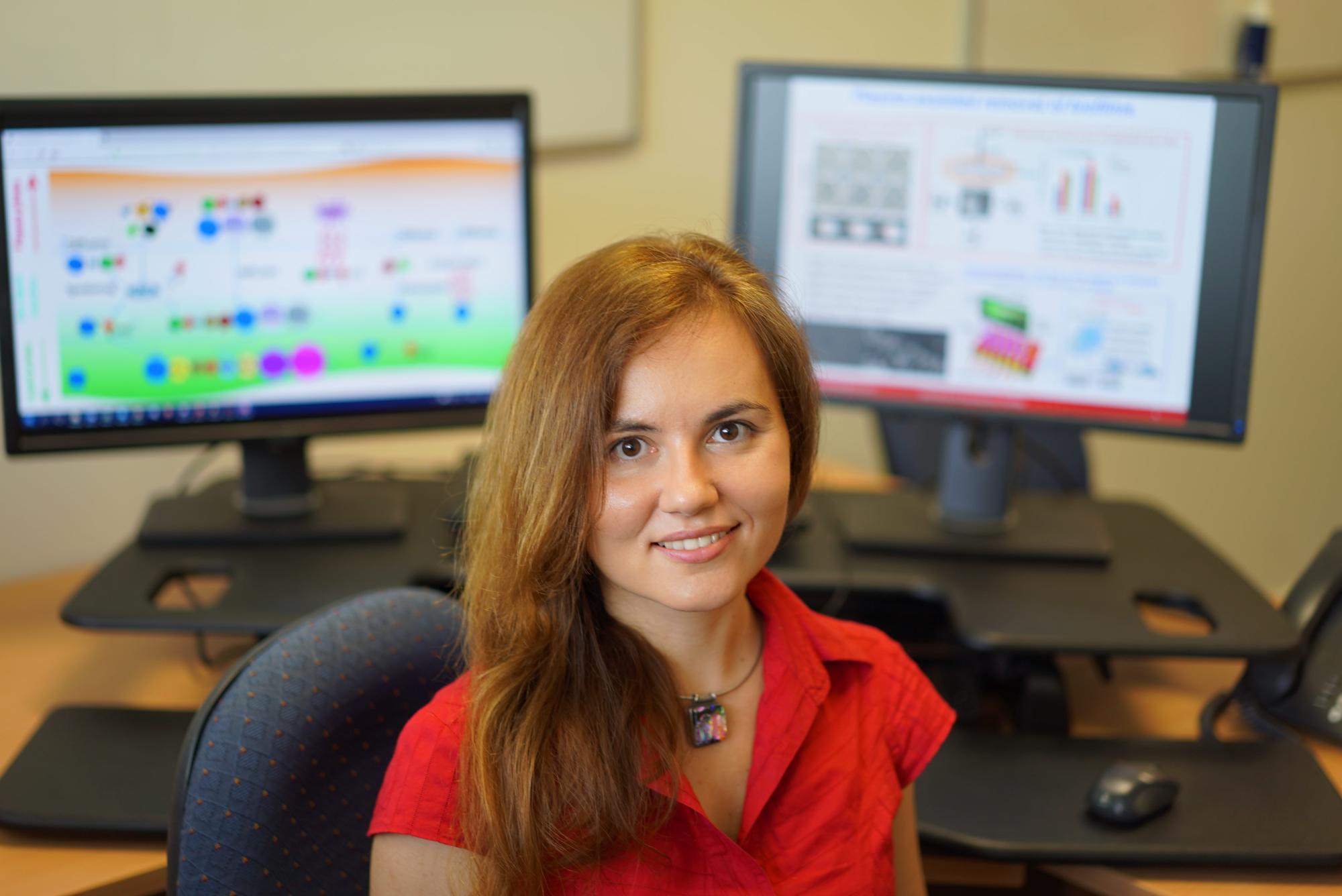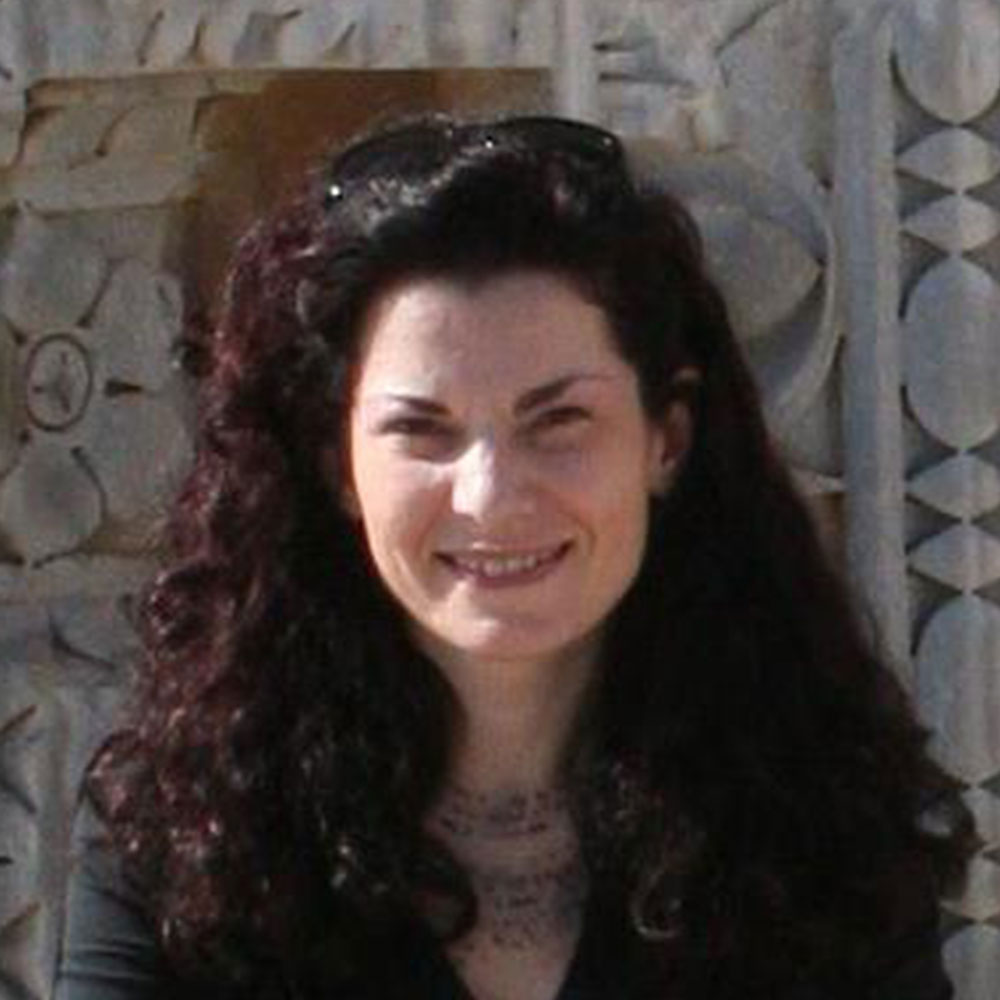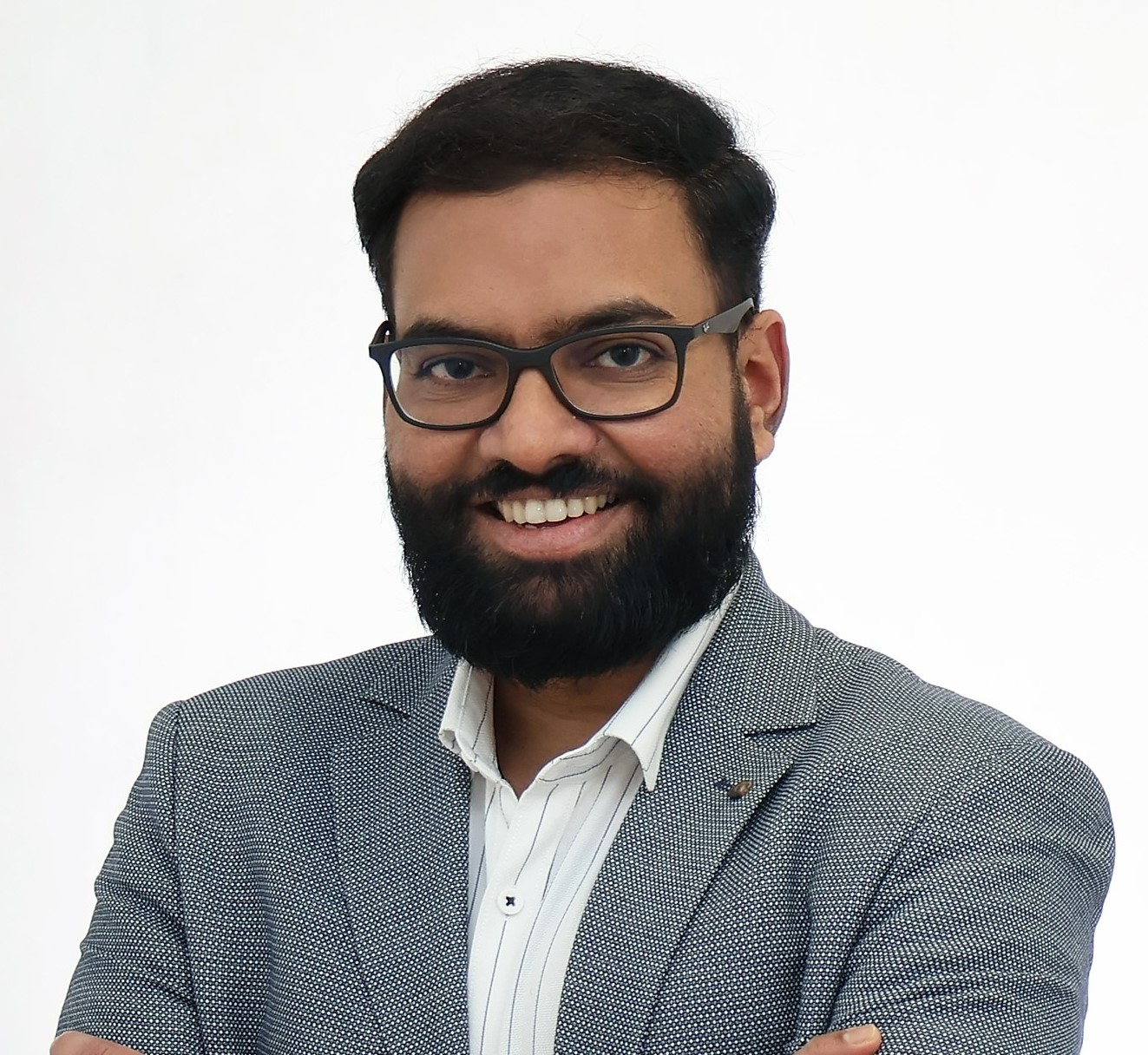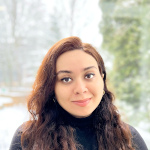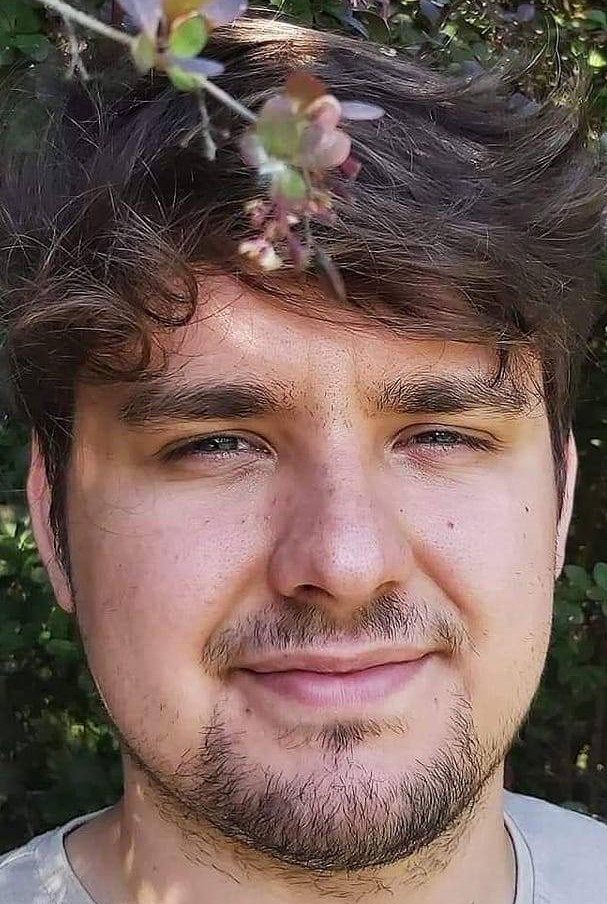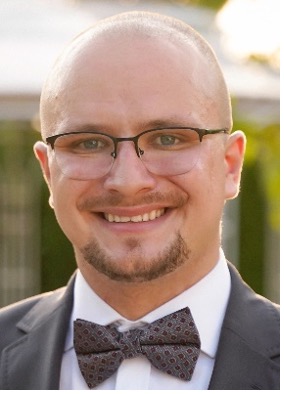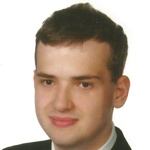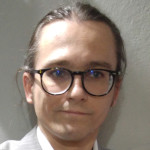INTERNATIONAL SCIENTIFIC COMMITTEE
Prof. Klaus Muellen
Chairman
Max Planck Institute for Polymer Research
Prof. Paul Blom
Director, Max Planck Institute for Polymer Research
Prof. Katarzyna Pernal
Lodz University of Technology
Prof. Frederik Wurm
University of Twente
Prof. Christian Grissinger
Max Planck Institute for Multidisciplinary Sciences
Prof. Krzysztof Matyjaszewski
Carnegie Mellon University
Prof. Jennifer Littlechild
Exeter University
Prof. Hazizan Md Akil
Universiti Sains Malaysia
Prof. Katia Alexander
The Australian National University
Prof. Maria Vamvakaki
University of Crete
MANAGEMENT
BIOMATERIALS GROUP
Vignesh Kumaravel, Ph.D. D.Sc. (University Professor)
Senior Principal Investigator
Research interest
Dr. hab. Vignesh Kumaravel has made remarkable contributions in his field of research, which have earned him recognition worldwide. He has been ranked among the top 2% of scientists globally in both 2021 and 2022, according to rankings by Elsevier and Stanford University, USA. His research focuses on finding sustainable scientific solutions to real-life problems, with a particular emphasis on addressing global challenges related to food safety, infectious diseases, GHG emissions, and the energy crisis. He achieves this by using novel functional nanomaterials in a sustainable way. Dr. Kumaravel's specific research areas include Antimicrobial Polymers & Coatings, Stimuli-Responsive Antimicrobial Implants & Scaffolds, CO2 capture & conversion, Green H2 production, Water Disinfection, Injectable Hydrogels, Carbonaceous Materials (Graphene and MXene), and Active & Intelligent Packaging.
Scientific career
MSc diploma: Pharmaceutical Chemistry – 2008, Madurai Kamaraj University, India.
PhD diploma: Chemistry – 2013, Madurai Kamaraj University, India
DSc (habilitation): Chemical Sciences - 2023, Lodz University of Technology, Poland.
5 main publications
T.S. Sorkhabi, A. Krzemińska, A.K. Kissmann, D. Gruber, F. Rosenau, M. Slouf, I. Sloufova, Z. Pientka, G. Nowaczyk, M. Kozanecki, J. Pietrasik, V. Kumaravel, A Combined Experimental and Theoretical Approach to Unveil the Antimicrobial Performance and Mechanism of Graphene Quantum Dots for Disinfecting Multidrug-Resistant Bacteria, Journal of Environmental Chemical Engineering 13 (2025)117892. https://doi.org/10.1016/j.jece.2025.117892
D. Atila, A.D. Dalgic, A. Krzemińska, J. Pietrasik, E. Gendaszewska‐Darmach, D. Bociaga, M. Lipinska, F. Laoutid, J. Passion, V. Kumaravel, Injectable Liposome‐Loaded Hydrogel Formulations with Controlled Release of Curcumin and α‐Tocopherol for Dental Tissue Engineering, Advanced Healthcare Materials (2024) 2400966. https://doi.org/10.1002/adhm.202400966
G.S. Lekshmi, A. Krzemińska, S. Sudararaju, S. J Hinder, A. Zatylna, P. Paneth, J. Pietrasik, C. Sudip, W. Hendrickx, A. J. Nathanael, B. Januszewicz, L. Kolodziejczyk, L. Kaczmarek, V. Kumaravel, Engineering of brewery waste-derived graphene quantum dots with ZnO nanoparticles for treating multi-drug resistant bacterial infections, Journal of Environmental Chemical Engineering 12 (2024) 112263. https://doi.org/10.1016/j.jece.2024.112263
Z. Qazanfarzadeh, A. Masek, S. Chakraborty, V.Kumaravel, Development of brewer’s spent grain-derived bio nanocomposites through a multiproduct biorefinery approach for food packaging, Industrial Crops and Products 220 (2024) 119226. https://doi.org/10.1016/j.indcrop.2024.119226
N. Kwiatos, D. Atila, M. Puchalski, V. Kumaravel, Alexander Steinbüchel, Cyanophycin modifications for applications in tissue scaffolding, Applied Microbiology and Biotechnology 108 (2024) 264. https://doi.org/10.1007/s00253-024-13088-4
Lekshmi Gopakumari Satheesh Chandran, Ph.D.
Post-doctoral researcher
Research interest
2D materials, energy materials, electrochemical biosensors, biowaste-derived polymer hybrid scaffolds for implants and drug delivery
Scientific career
BSc diploma: Bachelor of Science in Industrial Chemistry
MSc diploma:Master of Science in Industrial Chemistry and management
PhD diploma: Nanoscience and Technology
Other academic degrees: Master of Philosophy in Chemistry
5 main publications
1. G.S. Lekshmi, R. Tamilselvi, R. Geethalakshmi, S.D. Kirupha, O. Bazaka, I. Levchenko, K. Bazaka, M. Mandhakini, Multifunctional oil-produced reduced graphene oxide – silver oxide composites with photocatalytic, antioxidant, and antibacterial activities, Journal of Colloid and Interface Science 608 (2021) 294-305. https://doi.org/10.1016/j.jcis.2021.08.04.
2. G.S. Lekshmi, R. Tamilselvi, Karthika Prasad, O. Bazaka, I. Levchenko, K. Bazaka, M. Mandhakini, Wick and oil flame enabled the synthesis of rGO nanostructures and its oil adsorption profile for environmental remediation, Carbon Letters 31 (2021) 763–777. https://doi.org/10.1007/s42823-021-00244-3.
3. K. Prasad, G. S. Lekshmi, K. Ostrikov, V. Lussini, J. Blinco, M. Mandhakini, K. Vasilev, S. Bottle, K. Bazaka, K. Ostrikov, Synergic bactericidal effects of reduced graphene oxide and silver nanoparticles against Gram-positive and Gram-negative bacteria. Synergic bactericidal effects of reduced graphene oxide and silver nanoparticles against Gram-positive and Gram-negative bacteria, Scientific Reports 7 (2017) 1591. https://doi.org/10.1038/s41598-017-01669-5
4. R. Tamilselvi, G.S. Lekshmi, N. Padmanathan, V. Selvaraj, O. Bazaka, I. Levchenko, K. Bazaka, M. Mandhakini, NiFe2O4 / rGO nanocomposites produced by soft bubble assembly for energy storage and environmental remediation, Renewable Energy 181 (2021) 1386-1401. https://doi.org/10.1016/j.renene.2021.07.088.
5. S.P. Suresh, G.S. Lekshmi, S.D. Kirupha, M. Ariraman, O. Bazaka, I. Levchenko, K. Bazaka, M. Mandhakini, Superhydrophobic fluorine-modified cerium-doped mesoporous carbon as an efficient catalytic platform for photo-degradation, Carbon 147 (2019) 323- 333. https://doi.org/10.1016/j.carbon.2019.02.074
Research interest
His research integrates surface functionalization, nanomaterials engineering, and quantum chemistry with the development of advanced nanocomposites for food packaging, aiming to design next-generation molecular and two-dimensional nanostructures with tunable optoelectronic and NLO properties. As an MSCA fellow, he is pioneering the development of metastable square-phase 2D TMDCs for NIR-responsive antimicrobial coatings, bridging multiscale computational modeling with experimental validation to engineer multifunctional platforms for next-generation biomedical and photonic applications.
Scientific career
MSc diploma: Chemistry, Faculty of Sciences of Tunis
PhD diploma: Chemistry, Paris-Saclay University, France & University of Tunis ElManar, Tunisia
Other academic degrees: National Engineering Diploma, Chemical Engineering
5 main publications
1. N. Omri, Y. Bu. Lone Pair-Electrons- and Aromaticity-Dependent Optical Nonlinearity Responses of (ƞ5-Cp)Fe(η5-P5), Fe(ƞ5-P5)2, and [Fe(η4-P4)2]2− Ferrocene Analogues. Adv. Theory. Simul. 2024, 2400906. https://doi.org/10.1002/adts.202400906
2. N. Omri, Y. Bu TD-DFT Studies on sp- and sp2- Hybridized Single Vacancy-Defected [60]Fullerene: Electronic Excitation and Nonlinear Optical Properties of both C59[9-4] and C59[8-5] Isomers. J. Phys. Chem. A, 2021, 125, 106. https://doi.org/10.1021/acs.jpca.0c08533
3. N. Omri, F. Moussa, Y. Bu Functionalization of [60]Fullerene Through Photochemical Reactions for Fulleropyrrolidine Nanovectors Synthesis: Experimental and Theoretical Approaches. Colloids. Surf. B. Biointerfaces, 2021, 198, 111457. https://doi.org/10.1016/j.colsurfb.2020.111457
4. N. Omri,Y. Bu. Azomethine Ylide Addition Impact on Functionalized [60]Fullerene and [60]Boron-Nitride: Anticancer Doxorubicin and Boronic Chalcone Drugs Binding Characteristics with Mono- and Bis-nanocarriers. Colloids. Surf. B. Biointerfaces, 2020, 196, 111277-10. https://doi.org/10.1016/j.colsurfb.2020.111277
5. N. Omri, N. Besbes, Y. Bu. Single Vacancy Defected Endohedral Metallofullerene-Superhalogen: Molecular Topology and Nonlinear Optical Property of Na@C59[9-4]([8-5])-AlX4 (X = Cl, Br) Systems. New J. Chem. 2023, 47, 21332-21343. https://doi.org/10.1039/D3NJ04330D
Research interest
Hydrogels, Wound Healing, Antimicrobial, 2D Materials, Quantum Dots, Nanofibers, Scaffold Design
Scientific career
BSc diploma: Polymer Engineering- Polymer Industry, Azad university, IRAN, 2015
MSc diploma: Chemical engineering- Polymer, Azad university, IRAN, 2019
5 main publications
T.S. Sorkhabi, A. Krzemińska, A.K. Kissmann, D. Gruber, F. Rosenau, M. Slouf, I. Sloufova, Z. Pientka, G. Nowaczyk, M. Kozanecki, J. Pietrasik, V. Kumaravel, (2025) A Combined Experimental and Theoretical Approach to Unveil the Antimicrobial Performance and Mechanism of Graphene Quantum Dots for Disinfecting Multidrug-Resistant Bacteria, Journal of Environmental Chemical Engineering 13 (2025)117892. DOI: https://doi.org/10.1016/j.jece.2025.117892
Soltanolzakerin-Sorkhabi, T., Fallahi-Samberan, M., & Kumaravel, V. (2023) Antimicrobial activities of polyethylene terephthalate-waste-derived nanofibrous membranes decorated with green-synthesized Ag nanoparticles. Molecules, 28(14), 5439. DOI: https://www.mdpi.com/1420-3049/28/14/5439#
Sorkhabi, T. S., Samberan, M. F., Ostrowski, K. A., Zajdel, P., Stempkowska, A., & Gawenda, T. (2022). Electrospinning of Poly (Acrylamide), Poly (Acrylic Acid) and Poly (Vinyl Alcohol) Nanofibers: Characterization and Optimization Study on the Effect of Different Parameters on Mean Diameter Using Taguchi Design of Experiment Method. Materials, 15(17), 5876. DOI: https://doi.org/10.3390/ma15175876
Sorkhabi, T. S., Samberan, M. F., Ostrowski, K. A., Majka, T. M., Piechaczek, M., & Zajdel, P. (2022). Preparation and Characterization of Novel Microgels Containing Nano-SiO2 and Copolymeric Hydrogel Based on Poly (Acrylamide) and Poly (Acrylic Acid): Morphological, Structural and Swelling Studies. Materials, 15(14), 4782. DOI: https://doi.org/10.3390/ma15144782
Sorkhabi, T. S., Samberan, M. F., Ostrowski, K. A., & Majka, T. M. (2022). Novel synthesis, characterization and amoxicillin release study of pH-sensitive Nanosilica/poly (acrylic acid) macroporous hydrogel with high swelling. Materials, 15(2), 469. DOI: https://doi.org/10.3390/ma15020469
Research interest
Aerogel, synthesis of biomaterials, green chemistry, Bone tissue engineering, biosensors, Biomarker
Scientific career
Eng diploma: Materials Engineering
MSc diploma: Nanotechnology: Nanostructures and computer simulations in material science
5 main publications
I. Thamer, M. Mazurek-Budzyńska, V. Kumaravel, Sustainable biopolymer design: extraction of chitin and chitosan using natural deep eutectic solvents with improved antibacterial features, Materials & Design (2025), 114775. https://doi.org/10.1016/j.matdes.2025.114775
Research interest
Polymer chemistry (synthesis, characterization, and application), Bioreaction engineering.
Scientific career
BSc diploma: Chemical Engineering
MSc diploma: Chemical Engineering and Technology
5 main publications
Siegu, W.M.K., Djouonkep, L.D.W., Selabi, N.B.S. et al. Synergistic Effect and Structure–Property of Bio-based 1,6-Hexanediol on Thermal, Mechanical and Degradation Properties of Biopolymers. Journal of Polymer and Environment 31, 1144–1159 (2023). https://doi.org/10.1007/s10924-022-02666-0
Siegu W.M.K., L.D.Wandji., Adom E.K., et al, Synthesis of Biobased Soft- Packaging polyesters from 2,5-Thiophenedicarboxylic Acid. Journal of Polymer and Environment (2022) https://doi.org/10.1007/s10924-022-02373-w
Djouonkep L.D.W., Siegu W.M.K., Zhengzai C., et al, High Performance Sulfur-containing Copolyesters from Biobased Aromatic monomers. Express Polymer Letters (2022). https://doi.org/10.3144/expresspolymlett.2022.8
NANOSTRUCTURES AND INTERFACES GROUP
Research interest
My research interest covers both surface and bulk properties of organic/hybrid materials and is currently focused on bioinspired and chiral systems:
- Interface engineering in organic (opto)electronics,
- Functional polymers based on supramolecular chemistry,
- Photo-responsive molecular systems.
Scientific career
MSc diploma: Applied Physics, 2009, École normale supérieure de Cachan (France)
MSc diploma: Industrial and Engineering Chemistry, 2010, Silesian University of Technology (Poland)
PhD diploma: Physics, 2014, Université Pierre et Marie Curie – Paris VI (France) / University of Twente (the Netherlands)
5 main publications
G. Martinez-Denegri, F. A. Soares, P. Ślęczkowski, Wide Color Gamut and High Sensitivity in Luminescent Thermal Indicators from an Organic Energy Donor-Acceptor System with Tunable Molecular Interactions, Adv. Optical Mater. (2025), 13, 2403073.
F. A. Soares, G. Martinez-Denegri, L. A. Baptista, P. Ślęczkowski, A. Steinbuchel, Balancing the Push–Pull Effect on the Synthesis and Fluorescent Properties of New ESIPT Dyes for Thin Film Applications, J. Phys. Chem. C (2023), 127 (35), 17624-17636.
M. L. Ślęczkowski, M. F. J. Mabesoone, P. Ślęczkowski, A. R. A. Palmans, E. W. Meijer, Competition between chiral solvents and chiral monomers in the helical bias of supramolecular polymers, Nat. Chem. (2021), 13, 200-207.
J. C. Ribierre, Z. Li, X. Liu, E. Lacaze, B. Heinrich, S. Mery, P. Ślęczkowski et al. A solvent-free and vacuum-free melt-processing method to fabricate organic semiconducting layers with large crystal size for organic electronic applications, J. Mater. Chem. C (2019) 7, 3190-3198.
P. Ślęczkowski, Y. Zhou, S. Iamsaard, J. J. De Pablo, E. Lacaze, N. Katsonis, Light-activated helical inversion in cholesteric liquid crystal microdroplets, Proc. Natl. Acad. Sci. (2018) 115, 4334-4339.
Research interest
I am primarily focused on comprehending the relationship between structure and function in supramolecular materials composed of diverse organic building blocks. In recent years, my research has predominantly centered around short and ultra-short peptides, along with peptide-oligonucleotide chimeras. At present, my main objective is to develop and investigate on-surface supramolecular polymers that can be utilized for the fabrication of photoactive devices.
Some of the research areas that fascinate me include:
- Functional supramolecular polymers
- New peptide-based soft-matter
- Multi-component chemical systems
- Origins of life
Scientific career
BSc diploma: Biotechnology, Adam Mickiewicz University, Poland, 2010
MSc diploma: Biotechnology, Adam Mickiewicz University, Poland, 2012
PhD diploma: Chemistry, Ben-Gurion University of the Negev, Israel, 2019
5 main publications
Sadihov-Hanoch H., Bandela, A.K., Chotera-Ouda, A., Ben David, O., Cohen-Luria, R., Lynn, D.G., Ashkenasy, G., Dynamic exchange controls the assembly structure of nucleic-acid-peptide chimeras. Soft Matter (2023), 19, 3940-3945.
Chotera-Ouda, A.; Jeziorna, A.; Kazmierski, S.; Dolot, R.; Dudek, M. K.; Potrzebowski, M. J., "Crystal Memory" affects the properties of peptide hydrogels - the case of the cyclic Tyr-Tyr dipeptide. Chem. Eur. J. (2022), 28, e202202005.
Bandela, A.K., Wagner, N., Sadihov, H., Morales-Reina, S., Chotera-Ouda, A., Basu, K., Cohen- Luria, R., de la Escosura, A., Ashkenasy, G., Primitive selection of the fittest emerging through functional synergy in nucleopeptide networks. PNAS (2021), 118, 9.
Bai, Y., Chotera, A., Taran, O., Liang, C., Ashkenasy, G., Lynn, D. G., Achieving biopolymer synergy in systems chemistry. Chem. Soc. Rev. (2021), 018, 47, 5444-5456.
Chotera, A., Sadihov H., Cohen-Luria, R., Monnard, P.-A., Ashkenasy, G., Functional assemblies emerging in complex mixtures of peptides and nucleic acid–peptide chimeras. Chem. Eur. J. (2018), 24, 10128.
Research interest
Electrochemistry, Photophysics, TADF, OLEDs, Organic, Perovskite solar cells
Scientific career
BSc diploma: 2011, V.B.S. Purvanchal university, Jaunpur, India
MSc diploma: 2015 Pt. Ravishankar shukla university, Raipur, India
M.Tech: 2017 Pt. Ravishankar shukla university, Raipur, India
COMPUTATIONAL GROUP
Research interest
DFT calculations of the mechanisms of polymerization processes focusing on polylactides and directed toward optimization of conditions for improving their biodegradation. These studies include benchmarking of theory levels and comparison of energetics of alternative mechanisms.
Theory of isotope effects, application of isotopic fractionation to authentication of products, and finding isotopic markers in oncology. These studies concentrated on tunneling and chlorine isotope effects, application of stable isotopes of carbon and hydrogen to identification of alcohol origins, and isotopic composition of stable carbon and nitrogen isotopes of cancerous and healthy tissues, respectively.
Modeling of host-guest interactions in enzymes and nanostructures.
Scientific career
MSc diploma: 1976, Lodz University of Technology
PhD diploma: 1984, Lodz University of Technology
Other academic degrees: 1989 D. Sc. (habilitation), Lodz University of Technology, 1996 Professor, President of the Republic of Poland
5 main publications
Paneth P. On the Application of the Steady State to Kinetic Isotope Effects J. Am. Chem. Soc. 107, 7070 (1985)
Paneth P. Chlorine Kinetic Isotope Effects on Enzymatic Dehalogenations Acc. Chem. Res. 36, 120 (2003)
Dybala-Defratyka A., Paneth P., Banerjee R., Truhlar D.G. Coupling of hydrogenic tunneling to active-site motion in the hydrogen radical transfer catalyzed by a coenzyme B12-dependent mutase Proc. Natl. Acad. Sci. USA, 104, 10779 (2007)
Świderek K., Paneth P. Binding Isotope Effects Chem. Rev. 113, 7851 (2013)
Pokora M., Paneth A., Paneth P. Non-Covalent Isotope Effects J. Phys. Chem. Lett. 14, 3735 (2023)
Research interest
Quantum-chemical mechanistic studies; in particular, but not limited to, transition-metal-free hydrosilylation, hydroboration and hydrogermylation of carbon–carbon, carbon–oxygen and carbon–nitrogen unsaturated bonds.
Scientific career
MSc diploma: 2019, Adam Mickiewicz University in Poznan, Poland.
PhD diploma: 2023, Adam Mickiewicz University in Poznan, Poland.
5 main publications
Nowicki, M.; Zaranek, M.; Grzelak, M.; Pawluć, P.; Hoffmann, M. Mechanism of Silylation of Vinyl Arenes by Hydrodisiloxanes Driven by Stoichiometric Amounts of Sodium Triethylborohydride – a Combined DFT and Experimental Study. Int. J. Mol. Sci. 2023, 24, 4924.
Nowicki, M.; Kuciński, K.; Hreczycho, G.; Hoffmann, M. Catalytic and Non-Catalytic Hydroboration of Carbonyls: Quantum-Chemical Studies. Org. Biomol. Chem. 2021, 19 (13), 3004–3015.
Nowicki, M.; Zaranek, M.; Pawluć, P.; Hoffmann, M. DFT Study of Trialkylborohydride-Catalysed Hydrosilylation of Alkenes – the Mechanism and Its Implications. Catal. Sci. Technol. 2020, 10 (4), 1066–1072.
Zaranek, M.; Nowicki, M.; Andruszak, P.; Hoffmann, M.; Pawluć, P. Hydrogermylation Initiated by Trialkylborohydrides: A Living Anionic Mechanism. Chem. Commun. 2022, 58 (100), 13979–13982.
Pawłowska, A.; Volle, J.-N.; Virieux, D.; Pirat, J.-L.; Janiak, A.; Nowicki, M.; Hoffmann, M.; Pluskota-Karwatka, D. Perfluorophenyl Phosphonate Analogues of Aromatic Amino Acids: Synthesis, X-Ray and DFT Studies. Tetrahedron 2018, 74 (9), 975–986.
Mateusz Pokora, Ph.D.
Collaborating scientist
Research interest
Computational and quantum chemistry, adsorption on nanomaterials, modeling of solid-state materials, isotope effects
Scientific career
BSc diploma: 2019, Lodz University of Technology
MSc diploma: 2020, Lodz University of Technology
PhD diploma: 2025, Lodz University of Technology
5 main publications
Pokora, M., P. Paneth. Can Adsorption on Graphene be Used for Isotopic Enrichment? A DFT Perspective. Molecules, 2018, 23, 2981.
Cypryk, M., B. Gostyński, M. Pokora. Hydrolysis of Trialkoxysilanes Catalyzed by Fluoride Anion. Nucleophilic vs. Basic Catalysis New J. Chem., 2019, 43, 15222-15232.
Ye Han, M.Sc.
Ph.D student
Research interest
Computational chemistry mechanism studies, isotope effects, transition metalloenzyme catalysis, molecular dynamics
Scientific career
BSc diploma: 2021, Qingdao University of Science and Technology
MSc diploma: 2024, China University of Mining and Technology
5 main publications
Han, Y.; Cheng, S.; Guo, F.; Xiong, J.; Ji, L. Mechanistic and Predictive Studies on the Oxidation of Furans by Cytochrome P450: A DFT Study. Ecotoxicol. Environ. Saf. 2024, 279, 116460.
Cheng, S.; Su, L.; Han, Y.; Jin, L.; Ma, J.; Kong, C.; Zhang, S.; Huang, J.; Liu, C.; Paneth, P.; Ji, L. Novel Toxicity-Associated Metabolic Pathways of Benzotriazole UV Stabilizers by Cytochrome P450: Mechanism-Directed Analysis. Environ. Int. 2025, 205, 109887.
Ji, L.; Zhang, H.; Ding, W.; Song, R.; Han, Y.; Yu, H.; Paneth, P. Theoretical Kinetic Isotope Effects in Establishing the Precise Biodegradation Mechanisms of Organic Pollutants. Environ. Sci. Technol. 2023, 57 (12), 4915–4929.
Dominik Dusza, B.Sc.
Collaborating scientist

